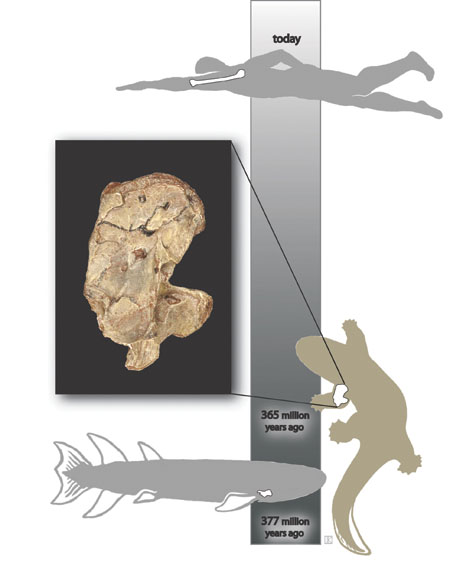 |
|
|
From fins to feet The fin bone’s connected to the limb bone. That’s according to findings reported in the April Science by a team including organismal biology & anatomy chair Neil Shubin, associate professor Michael Coates, and Ted Daeschler of Philadelphia’s Academy of Natural Sciences. In layered rocks along a north-central Pennsylvania roadside, the paleontologists unearthed a fossil that helps reveal how fish evolved into amphibians. The two-and-a-half-inch humerus, or arm bone, appears to link aquatic creatures with land dwellers, sharing characteristics of both. The team believes the 365-million-year-old fossil—the oldest known of its kind—enabled fish to prop themselves up above the water, indicating that arms and legs began developing in the sea rather than on dry terrain, as previously thought. With other specimens from the same dig site garnering attention and only a small portion of the bone exposed in the late Devonian Period sandstone, the fossil went unnoticed until 2001, when the Academy’s Fred Mullison got around to excavating it. The researchers planned to return to the site this spring.—M.L.
|
|
phone: 773/702-2163 | fax: 773/702-8836 | uchicago-magazine@uchicago.edu

 Original
Source
Original
Source  Graphic
by Kalliopi Monyios
Graphic
by Kalliopi Monyios